August 16, 1894
Our County.
————————
Its Agricultural Resources, Fine soil, and Salubrious Climate.
————————
The Educational, Religious and Business Institutions of a Prosperous People.
————————
SOME MEN OF YESTERDAY, THE MEN OF TO-DAY, AND THE PROMISES OF THE FUTURE.
————————
Our Minerals as Seen by an Eminent Geologist After a Thorough Investigation.
————————
Crittenden county was organized in 1842 out of a part of Livingston county, and was the ninety-first county formed in the State. It is [bounded] on the north by the Ohio river, on the east by Union and Webster counties, on the south by Caldwell and Lyon, and on the west by Livingston.
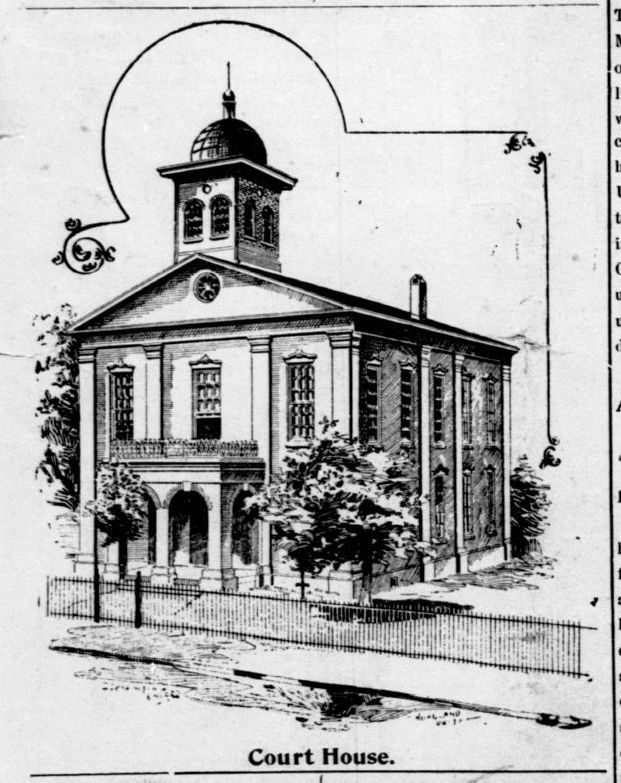
The first actual settler known to have broken the virgin soil of what is now known as Crittenden County, was James Armstrong, a native of South Carolina. He came to Russellville in 1785. All the best land being entered when Armstrong arrived, he resolved to travel westward until a choice piece of land was fount. When he came to the beautiful Fredonia Valley, he was charmed with the fertile region. In 1786 with his chattles [chattels] loaded on a pack horse he brought the banner of civilization to what is now Crittenden county. He build a cabin on Livingston creek a few hundred yards below the Centerville ford--this house was a rude affair, it was twelve feet square, and had no door, a window in the gable served the purpose of a door and was reached by a ladder, which was drawn inside the cabin when entered for the night; this was the first house ever build in Crittenden, this was the foundation of our splendid civilization of to-day. Five years later Mr. Armstrong brought his family to his new and humble home in the wilderness. Between 1785 and 1820 a large number of settlers filled the valley between Princeton and the Ohio river. Near the southern boundary line of the county, on the north bank of Livingston creek, can now be seen a few ancient locust trees, partially filled cellars, and a few foundation stones. These are the remains of the first town in the county. It was Centerville, and for a few years it flourished as a green bay tree, and then decay set in. Its chief attraction was its land office, and for a while it was the county seat of what would now be called a vast territory. The territory was divided into the counties of Caldwell and Livingston and the county seat of the latter was moved to Salem, which was the capital of the vast territory--an area of one thousand square miles--until 1842. In 1841 the question of dividing the county entered into and was the issue in the election of the member of the Legislature. Dr. John S. Gilliam was chose as a divisionist, and on January 26, 1842 the legislature passed the following resolution:
"Be it enacted by the General Assembly of Kentucky, that from and after the first day of April in the year 1842, all that part of Livingston, in the following bounds, to wit: Beginning on the Ohio river at the mouth of Deer Creek, thence on a straight line to Presley's Grays large spring, thence a direct line to Pucketts big spring, thence down said creek to Cumberland river, thence up Cumberland river to the mouth of Livingston creek, thence with the Caldwell county line to Tradewater river, thence down the Tradewater river to its mouth, thence down the Ohio river to the beginning, including all of the islands in the said Ohio river opposite to said boundary shall be, and the same is hereby made and erected into a county, known and called by the name of Crittenden."
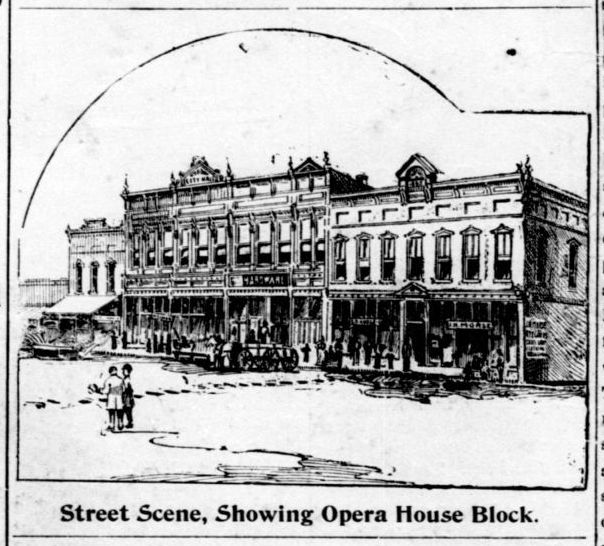
This act also appointed the following gentlemen to "faithfully and impartially locate the seat of justice for the county," at some suitable place, not exceeding two and one half miles from the territorial center of the county: Thos. J. Flournoy, of Caldwell county; Frederick D. Word, of Hopkins county; Robert N. Lewis, of Hickman county; Robert T. Leeper, of Caldwell county, and James Gholson, of Christian county. These gentlemen met on the first Monday in April 1842, at the house of James Cruce, and after some deliberation, the present site of Marion was agreed upon as the place for the capital of the new county, which had been named in honor of United States Senator John J. Crittenden. At this time the only house in Marion was that of Dr. John S. Gilliam which was a double log structure, that stood in the center of town until a few years ago when it was destroyed by fire.
————————
AGRICULTURAL RESOURCES.
"Accuse not nature, she has done her part, Do thou but thine."
The development of the county has been gradual; every year since its formation, the forests have given away to the woodman's ax, new homes have been reared, the little clearings have broadened into wide acres and extensive farms, the little cabins have tumbled down, while substantial houses and pretty residences speak in louder tones than printers ink of material progress.
Crittenden is pre-eminently an agricultural county, and its resources even in this respect are yet undeveloped, comparatively speaking. The soil is generally productive, and has paid well those who have tilled it with good judgment. It produces abundantly tobacco, corn, wheat, oats, rye, vegetables, all kinds of fruits such as apples, peaches, pears, plums and smaller fruits such as berries grow to perfection. Millions of pounds of tobacco are shipped from the county annually, and the new stemmeries and barns that are annually being erected at the shipping points and on the farms tell that the weed will have its producers in the county for many years to come, and will continue to bring a vast amount of money into the county. As a corn producing county Crittenden stood six from the top, only five other of the 117 excelling her in point of bushels. The rich river bottoms, and the fertile valleys yield from 40 to 75 bushels per acre, and a vast quantity of this cereal is annually exported, while hundreds of bushels are consumed in stock raising at home.
A great deal of wheat is also exported.
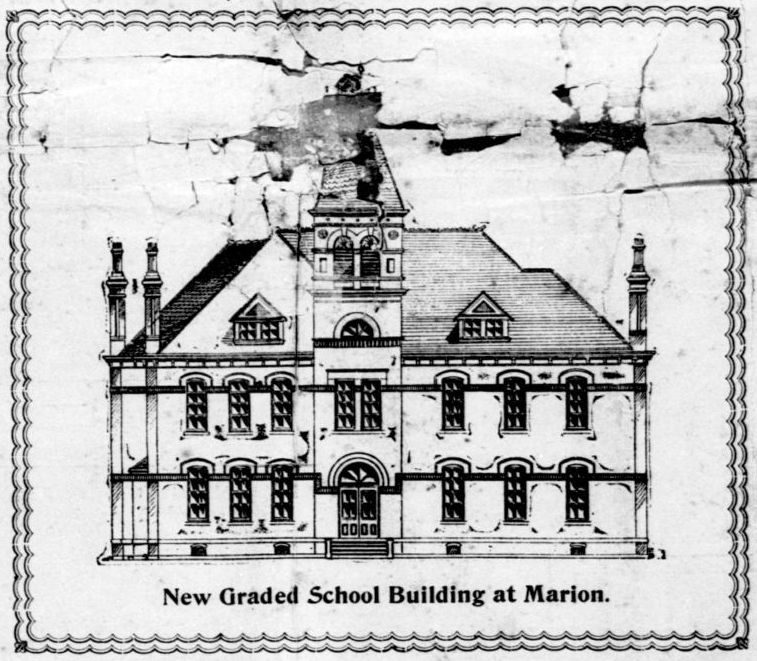
The soil and altitude of the county peculiarly fit it for fruit growing and wherever the orchards are properly taken care of they are the most remunerative of all investments. Hundreds of dollars are spent yearly in setting out and improving orchards, and vast quantities of fruits is produced, and it is of the finest flavor and quality in every respect. The people have not learned yet how to take care of and market their fruits, so as to make the greatest returns for the investment, but in this particular nature has especially done well her part, and by and by the luscious peaches, the savoury grapes, with the rich tints from the iron in our soil, the fine flavored apples, will become renowned. We need canneries and it is hoped that with the return of the hum of industry, capital will find its way here to seek profitable investment, along this line. Of late years stock raising has grown to be one of the county's leading features, and no section on the habitable is better adapted to this the most ancient, pleasant and profitable of all avocations. The soil is peculiarly adopted to all of the grazing grasses, clover grows to perfection, blue grass is finding a foot-hold, timothy, red top, orchard grass, millet, etc., all grow splendidly. The farms, most all, have splendid streams of sparkling water. The farmers are comparatively just beginning to realize the splendid profit, incident to stock raising, and the pleasant easy way of making a good living in this business, and putting by something for a rainy day. The shipment of stock from the county is on the increase annually, hogs and cattle with a few sheep constitute the products in this line. One buyer alone shipped 100 car loads from Marion, and then shipments are made from the various river towns by boats, where freight rates are very cheap. Twenty years ago the farmers had money only once a year, when he sold his tobacco, since giving some attention to stock raising, he has some money the year around and he does not toil as continually as of yore. Farming lands are worth from $5 to $40 per acre depending on locality and fertility. While vast quantities of timber have been sold, there are hundreds of acres of timber land yet; and hundreds of homes can be purchased at moderate prices. By homes are meant acres of land sufficient in quantity and fertile enough in quality to furnish remunerative employment to several thousand people. Notwithstanding the broad grain and grass fields, the big farms of corn and the herds grazing upon a hundred hills, agriculture in Crittenden is destined to reach a point in quality and quantity that would be a revelation even to the farmers of to-day. The past few years have witnessed rapid strides in that direction, even in this hard year there never was as much improvement in the clearing of grounds, building of grain and stock barns, improvement of residences, in the same length of time, before in the history of the county.
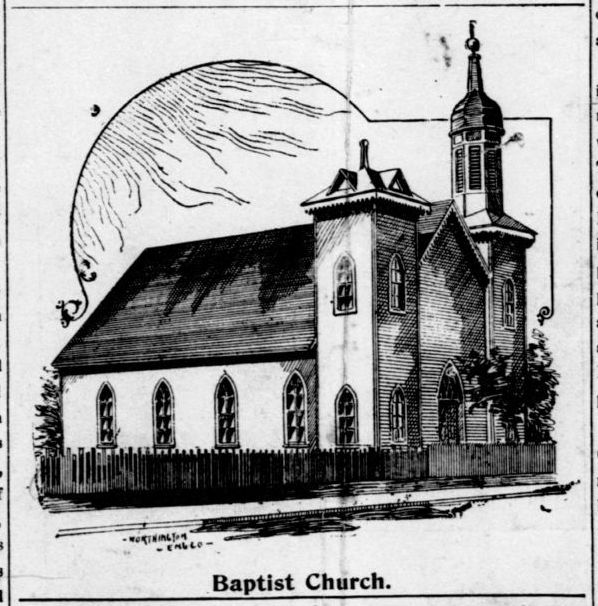
In the early spring the farmers appeared to be an organized industrial army bent on, not breaking up all old ground, but in broadening their acres, improving the appearances and increasing the conveniencies [conveniences] of their farms and houses. More improved machinery was sold than ever before in one season.
The minerals of our county are treated under another head by Prof. Ulrich, late of the State Geological survey. He spent much time here investigating and is perhaps the best informed man there is in on our mineral resources. We have an abundance of fine coal in the eastern portion of the county; as yet these rich gifts of nature have been worked only on a limited scale; these coals have attracted widespread attention. Then there is the lead, the spar, the zinc, the mountains of iron, peeping over the banks of the navigable streams which almost surround the county, the beds of ochre, and the quarries of fine building stone all adding to the wealth of the county.
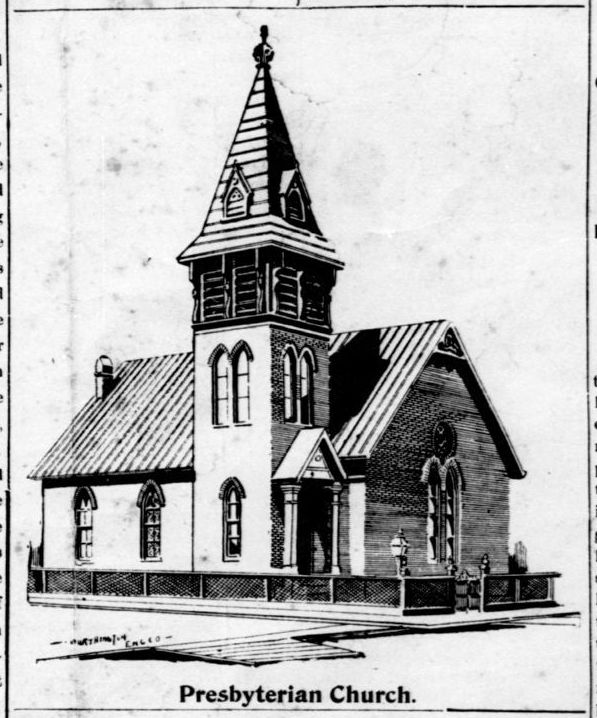
The people of the county are sober, industrious, peaceful, social and moral. Substantial churches are well attended in every neighborhood. The tasty spires of the Baptist, Methodist, Presbyterian, Cumberland Presbyterian, Christian or Campbellite churches are honored by our people, while good men, able in the preaching of the word of God, loved and respected for their christian character go in and out before the people. Practically all the churches have prosperous Sunday schools.
In the point of educational interests Crittenden is the peer of any of her neighboring counties. The little old log school house, with its char-coal frescoed walls, and its prim[i]tive surroundings has been driven to the rear, and bright cozy frame school houses, well ventilated, with comfortable desks, and cherry surroundings are the pride of every community. The standard of teachers has gone upwards too, and the length of the term of our public schools is on the increase. Along with these things have come the news papers, religious and secular, the magazines and books. With such resources, such a people, such hopes and promises, Crittenden is a happy prosperous county. Surely if the spirits of those who made the foundation for the good county of Crittenden, ever come back to earth, they will not be displeased with their own work. A few of these pioneers are still with us, but their ranks are thinned; those that remain have laid aside the ax and gun for the staff. They shall not be forgotten. Every man was a hero, they pressed back the border line of civilization and toiled that we, their de[s]cendants, might have happy homes, social blessings, civil and religious liberties. We build for the future as they toiled for our present.
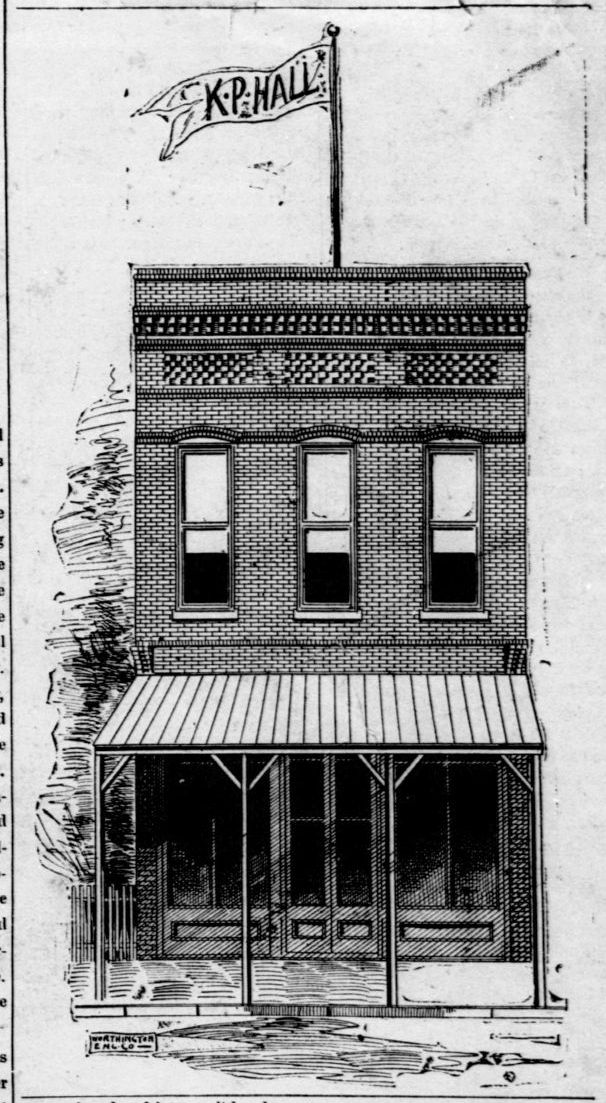
If the reader [illegible] a home where the climate and soil meet the reasonable demands of man, let him come to Crittenden. Here is a soil of medium fertility, here products of endless variety, here healthfulness unquestioned and here solid educational and religious advantages. to readers both practical and poetical it may be said of this section, that as 'neath oceans depths the pearl untouched lies useless, until by toiling diver thence upborne it sees the glorious sunlight first and mayhap gleams upon the snowey [snowy] neck of beauty; so also a wealtth [sic] untold lies sleeping, awaiting the magic touch of man and means to bring r [sic] forth gems now silent and inert.
————————
MARION
————————
A Few Things About The Beautiful Capital of The County.
————————
Good Schools and Churches, And Prosperous Societies.
————————
Her Solid Business Houses, Enterprising Citizens and Beautiful Homes.
————————
Marion is the county seat of Crittenden county. It was named to honor the famous revolutionary general, Francis Marion, and its hardiness and sterling staying qualities partake somewhat of the characteristics of that patriot and hero. Marion is near the center of the county geographically, and is on a plateau, the highest point of the county. Just south the waters run to the Cumberland and from the city they flow to the Ohio. The beauty of her location, the abiding faith of her people, the sterling qualities of her business men, the substantial character of her business and public buildingss, the beauty of her homes, the purity of her churches, the admirable quality of her schools and civic societies, the healthfulness of the surroundings, the hospitality and generosity of her people, all unite in making Marion one of the most substantial little town in Southern Kentucky. The town has a population of 1,500 scattered over a territory less than one mile square. It has one bank, four big dry goods stores carrying stocks varying from $8,000 to $15,000 each; three hardware stores carrying big stocks of hardware and farming implements; two furniture stores, one bookstore, six groceries, one tailor shop, two millinery stores, one bakery, two shoe shops, two drug stores, two butcher shops, two livery stables, two blacksmith and wagon shops, one fine hotel, five good boarding houses, eight preachers, thirteten lawyers, five doctors, two dentists, twelve carpenters, two transfer men, one marble yard, two photographers, one newspaper, two barber shops, one opera house, one planing mill, two saw mills, one wool carding machine, one brickyard, two jewelers, two saloons, one tobacco stemmery, three insurance agents, four white churches, three colored churches, one graded school, four secret societies, one produce house, one dis-
(CONTINUED ON SECOND PAGE.)
Source: Crittenden Press. (Marion, Ky.) 1879-1907, August 16, 1894, Image 1 - Chronicling America - The Library of Congress.
[My comments are in brackets.]
<Prev> - <Next>